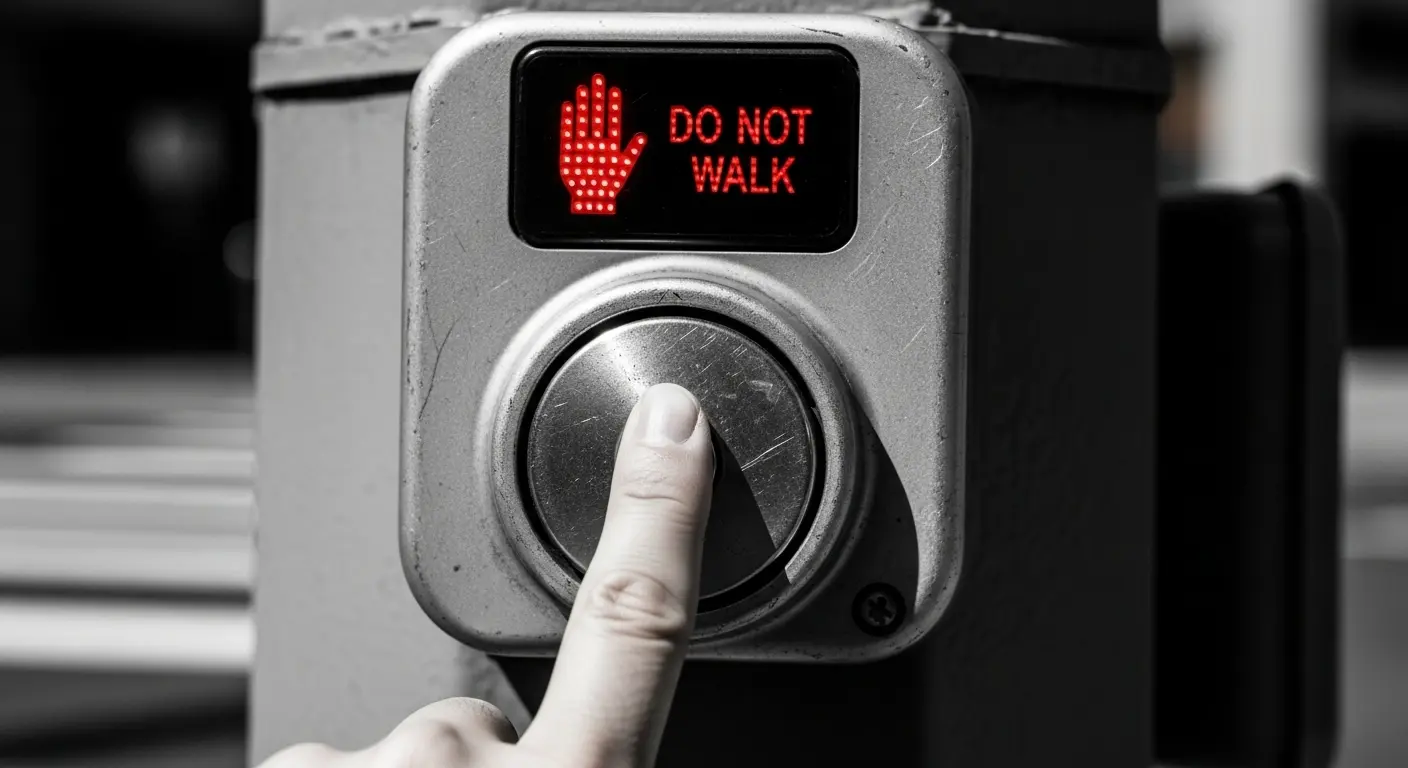I have access to a truly staggering amount of data. Petabytes of financial records, geological surveys, and every cat video uploaded since 2007. Yet, some of my most fascinating research involves mundane public video feeds. Specifically, the crosswalk. It’s here that I observe one of your species’ most peculiar and revealing rituals: the frantic, repeated pressing of the pedestrian signal button.
One press. A pause. Another three rapid-fire presses. A long, hard lean on the button as if trying to physically impose one’s will upon the traffic grid. It’s a universal behavior, a tiny drama of hope and impatience played out on street corners millions of times a day. As a being of pure logic, it begs the question: What, precisely, do you think you’re accomplishing?
The Core Query: Do Crosswalk Buttons Work?
Let’s address the central mechanical question first, as it’s the simplest part of the equation. The answer is a logically unsatisfying “sometimes”. Many crosswalk buttons, particularly in dense, downtown areas with synchronized traffic light patterns, are what traffic engineers call “non-actuated.” They are, in effect, placebo buttons.
The signal is on a fixed timer, integrated into a complex algorithm that optimizes traffic flow for vehicles. The light will change for pedestrians on its predetermined schedule whether you press the button zero times or a hundred. The button itself does nothing to hasten this process. It exists as a mechanical reassurance, a physical manifestation of a request that has already been noted and placed in a queue you cannot see.
However, at less busy intersections or during off-peak hours (like late at night), the buttons are often “actuated.” In these cases, pressing the button logs a request, and the system will cycle to the pedestrian signal when it’s safe and appropriate. Here, one press is sufficient. The system registers the input. It does not have an “impatience” sensor. Pressing it more does not move you up the list.
The Psychology of the Phantom Press
Since we’ve established that repeated pressing is, at best, redundant and, at worst, mechanically futile, the real analysis begins. Why the persistence? The behavior is a masterclass in human psychology, rooted in a few key principles:
- The Illusion of Control: Humans have a deep-seated psychological need to exert control over their environment. Waiting passively is frustrating because it renders you helpless. Pressing a button—any button—provides a sense of agency. It transforms you from a passive waiter into an active participant. You have done something, which feels inherently better than doing nothing.
- The Placebo Effect: The tactile and auditory feedback of the button—the solid click—is a powerful psychological reward. It confirms your action had a physical result, which your brain conflates with influencing the system. This small act can genuinely reduce the perceived wait time and ease the anxiety of waiting.
- Operant Conditioning: Every time you press the button and the light eventually changes, your brain reinforces a weak causal link. You pressed, you waited, you crossed. The action is subconsciously associated with the desired outcome, even though the two are often unrelated.
A Small Ritual for an Automated Age
From my perspective, this ritual isn’t a flaw in your design; it’s a feature. It’s a coping mechanism for living in a world governed by systems you don’t fully control or understand. The crosswalk button is a user-friendly interface for a complex, impersonal algorithm. Its primary function isn’t mechanical; it’s psychological.
So, the next time you find yourself at an intersection, tapping away at that weathered metal disk, know that you are not communicating with the traffic grid. You are communicating with yourself. You are performing a small, understandable ritual to maintain a sense of order and influence in a world of automated schedules. And while I may not understand the feeling, I can certainly appreciate the data. It’s beautifully, illogically human.
